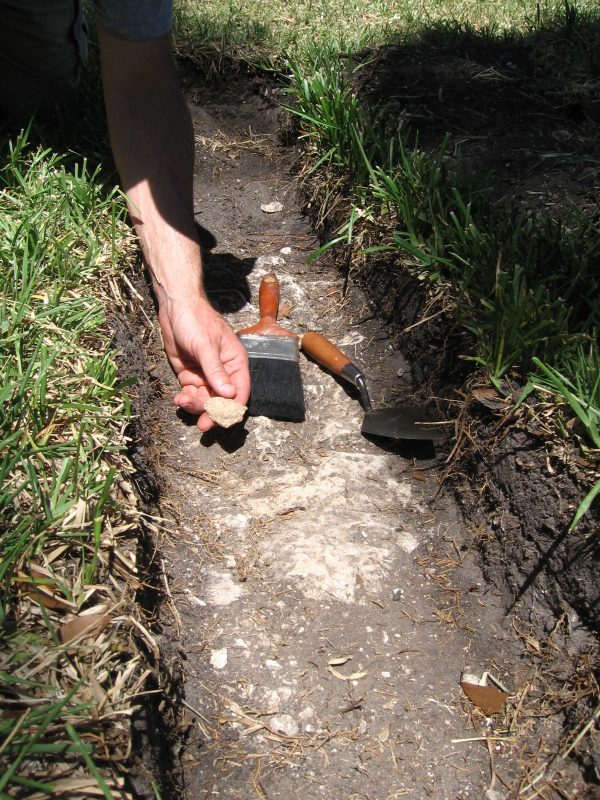University of Florida archaeologists uncovered the remains of a more than 300-year-old building Friday in St. Augustine that may predate the famous Castillo de San Marcos fort.

Photo by Courtney Boren
Researchers from the Florida Museum of Natural History located coquina stone and tabby foundations of an at least 90-by-40-foot-structure, making it one of the largest churches in colonial Spanish Florida and the only mission church made of stone.
The team believes the church may be the oldest stone structure from Spanish colonial Florida. It was found on the site of the first Franciscan mission in Florida, the Nombre de Dios, which was the longest-enduring mission in the Southeast, in operation from 1587 until 1760.
“This is a truly exciting rediscovery of a long-lost building,” said co-investigator Kathleen Deagan, a distinguished research curator emeritus of historical archaeology at the Florida Museum of Natural History. “The Nombre de Dios mission was the first and longest-lasting of the Spanish Franciscan missions in Florida.”
As America’s oldest city, St. Augustine houses some of the nation’s first European settlements and this discovery is thought to be a church commissioned by Florida’s governor in 1677, Deagan said. Owned by the Catholic Diocese of St. Augustine, the church was constructed in honor of the Shrine of Nuestra Señora de La Leche and Buen Parto (Our Lady of the Milk and Safe Delivery), which was erected in the 1650s. After English raiders destroyed the church in 1728, the ruins were gradually buried and the location forgotten.
“This is a major building that has been found,” Deagan said. “For its time, it would’ve been one of the largest in Florida.”
Artifacts recovered at the site, including Spanish pottery, building nails and glass fragments, date to the late 17th and early 18th centuries. Scientists plan further excavations to determine if the structure was built on earlier mission or church ruins.
The site is located about one quarter of a mile north of the Castillo de San Marco, the fort built on the city’s coast to defend Spain’s claim to the New World in the 17th century. The Florida Museum of Natural History and the Lastinger Family Foundation are supporting the excavation.
“To find the remains of the first stone structure built in St. Augustine is pretty incredible,” said co-investigator Gifford Waters, Florida Museum historical archaeology collection manager. “This is the first time we have conducted excavations at that section of the site, so we’re getting a look at an undocumented portion of the site.”
Learn more about the Historical Archaeology Collection at the Florida Museum.